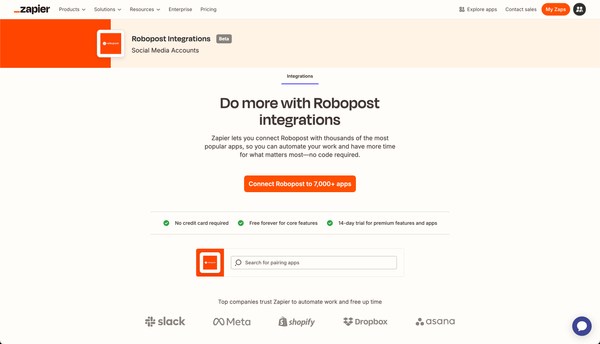The Impact of Live Streaming on Social Media Marketing
Explore the transformative role of live streaming in social media marketing and its impact on brand-audience engagement.

Live streaming has changed social media marketing by giving brands a lively and interactive way to connect with their audiences instantly. This engaging form of digital communication allows for spontaneous and genuine interactions, which can help build stronger relationships and boost brand loyalty. As social media platforms keep evolving, live streaming is becoming an essential tool for marketers who want to grab and hold their audience's attention in a crowded online space.
Key Takeaways
- Live streaming helps brands become more visible and increasing audience loyalty through interactive and unscripted content.
- Brands can get immediate feedback from viewers during live streams, allowing them to adjust their marketing strategies quickly for a more personalized experience.
- Combining live streaming with e-commerce, especially through influencers, is shaping the future of social commerce with interactive live sales.
- Although live streaming offers many opportunities, brands need to handle technical challenges and find a balance between being authentic and maintaining their brand message.
Engaging Audiences Through Live Video
Leveraging Live Events for Brand Visibility
Live streaming has become an important tool for brands that want to stand out in a busy online marketplace. By broadcasting events live, companies can connect with a global audience in a way that regular posts or pre-recorded videos can’t. This direct interaction not only increases visibility but also helps build a community around the brand.
Here are some key benefits of using live events for brand visibility:
- Quick exposure to a large audience
- Creation of unique content that generates excitement
- Opportunity to showcase the brand's personality and values
- Ability to interact with consumers directly and get instant feedback
Using live streaming in marketing isn’t just about being present; it’s about creating memorable experiences that engage and convert viewers. As the online landscape changes, brands that take advantage of live events are likely to see a big boost in their visibility and engagement with customers.
Authenticity and Spontaneity in Marketing
Live streaming helps brands show their true personality and values in real-time. This spontaneous style appeals to audiences because they prefer genuine interactions over polished, rehearsed content.
By using live video, companies can tell authentic stories and give honest insights into their operations and culture. This approach not only makes the brand feel more relatable but also helps build a stronger connection with the audience, which can increase brand loyalty.
Enhanced Engagement with Live Streaming
Immediate Feedback and Audience Adaptation
Live streaming on social media gives brands a unique chance to connect with their audience instantly. Viewers can provide immediate feedback through comments, likes, and reactions, which helps brands understand what consumers like. This direct communication allows brands to quickly adjust their content and marketing strategies to better connect with their audience.
- Immediate Feedback and Adaptation: Brands can get quick feedback and change their approach.
- Real-time Interaction: Brands can engage with the audience live.
- Tailoring Content: Brands can adjust their content based on live reactions.
Being able to respond to audience feedback can lead to higher sales and better returns on investment (ROI). Live streaming is an effective way for brands to gather direct feedback, helping them improve their products and marketing based on what customers say.
Measurable Results and ROI from Live Interactions
By monitoring results of live streams like viewer engagement, watch time, and audience demographics, companies can quickly see how well their live content is performing. This data-focused method lets them make quick changes and plan better for future broadcasts.
The table below shows common metrics used to evaluate live streaming performance:
Metric | Description |
|---|---|
Viewer Engagement | Interactions such as comments and likes. |
Watch Time | Total duration viewers spend watching. |
Audience Growth | Increase in followers or subscribers. |
Conversion Rate | Percentage of viewers taking desired action. |
These metrics help measure how live interactions affect audiences and also help brands improve their strategies for better results. Being able to change the content based on viewer feedback during the stream makes marketing more engaging and effective.
The Future of Social Commerce and Live Streaming
E-commerce Evolution with Interactive Live Sales
E-commerce is changing fast with the rise of interactive live sales, which are transforming how people shop online. In recent years, live selling has not only boosted sales but also helped brands create genuine connections with their audiences. Last year, the livestream e-commerce market grew to $31.7 billion, almost three times its size from 2021, and is expected to double again by 2026, reaching $67.8 billion.
Live-streaming sessions on popular e-commerce platforms have skyrocketed, with over 120 million user sessions and five times more growth in the last two years. This growth is mirrored in sales, which jumped from $3.98 billion in 2017 to $368.96 billion in 2022.
The way viewers react to livestream content, both emotionally and mentally, can greatly influence their buying decisions. Marketers who understand these reactions can fine-tune their strategies to take full advantage of this growing trend.
Consumer Behavior and Live Stream Shopping Trends
Live streaming has changed online shopping, creating a fast-paced environment where consumer habits are shifting quickly. It not only makes shopping easier for consumers but also opens new doors for e-commerce and social commerce businesses. The interactive nature of live streams can lead to impulsive buying, as people’s reactions to the content, both emotional and mental, can influence their decision to make purchases.
A recent study, using a model called the stimulus-organism-response framework, shows that factors like a strong social presence and promotions during live streams can create a sense of flow, leading to more impulse buying. Other important factors include the quality of the content, the influence of hosts, and the features of the platform. These elements help boost the perceived value and drive more purchases. However, current research has its limits, often focusing on brief, data-driven studies that may not fully explain the deeper aspects of live-stream shopping.
A report estimates that the US livestream shopping market will hit $68 billion by 2026. This underscores the need for more detailed research, such as interviews, to better understand the psychology behind customer engagement and provide a fuller picture of this growing trend.
Leveraging Influencers in Live Stream Marketing
Influencers play a crucial role in amplifying a brand's message and promoting authentic connections with audiences in live streaming. Collaborating with influencers allows brands to tap into their established following, introducing products in a way that feels relatable and engaging.
This approach works because consumers are more likely to engage with content that feels personal and authentic. Brands that effectively integrate influencers into live streaming strategies will stand out in a competitive digital marketplace.
Challenges and Considerations in Live Streaming
Navigating Technical Difficulties and Platform Limitations
Live streaming is a great way to engage with audiences but comes with some challenges. Technical problems like unstable internet, the right equipment, and software issues are common. Interruptions can happen, so it's important to be flexible and keep the stream going, even if it means broadcasting from unexpected places like a founder’s bedroom.
Balancing Authenticity with Brand Messaging
Brands need to strike a balance between being genuine and sharing their key messages during live streaming. Authenticity is important for building trust, but it’s just as vital to make sure the brand’s main points come through clearly.
- By chatting with customers in real time, brands can answer questions and show they are open and honest.
- Telling real stories through live video helps brands connect by sharing a behind-the-scenes look at their work, values, and culture.
- Being good at telling authentic stories is crucial for brands that want to connect with their audience and succeed online.
The secret to great live streaming is mixing spontaneous moments with planned content, so the interaction feels real but still aligns with the brand’s identity and goals.
Conclusion
Live streaming has become a game-changer in social media marketing. It gives brands a unique way to connect with audiences in real time, show their authentic side, and build strong relationships. Live video’s instant and interactive nature boosts engagement and provides immediate feedback, helping brands quickly adjust their strategies. Moving forward, using live streaming in marketing isn’t just a passing trend—it’s essential for brands that want to stay competitive and connect with consumers in today’s digital world. Those who use it effectively are likely to see major growth and success.
